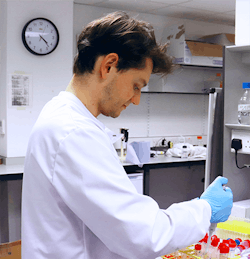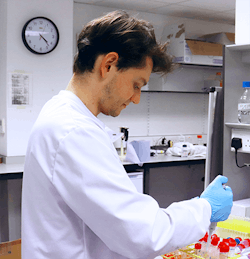Industry Eyes Bio-Based Nylon Precursor
Figure 1. Improving enzyme solubility should lead to increased adipic acid yield. Source: Mirren White, University of Edinburgh.
A sustainable process to manufacture adipic acid, a key precursor to nylon, is attracting significant industrial interest, note its developers at the University of Edinburgh, Scotland.Production of adipic acid now relies on fossil fuels and generates the potent greenhouse gas nitrous oxide. However, the Edinburgh team has taken a biosynthetic route by altering the genetic code of E.coli bacteria and then growing them in the lignin-derived feedstock guaiacol. After 24 hours at 37°C and atmospheric pressure, the one-pot process transforms the guaiacol into adipic acid. This requires no additional additives or reagents and generates no byproducts.
“It’s been great to receive so much interest from industry already, although I can’t mention which companies right now,” says Stephen Wallace, principle investigator of the study and senior lecturer in biotechnology at Edinburgh’s school of biological sciences.
Noting that the annual worldwide production of adipic acid is around 2.6 million tons and worth $6.3 billion, he adds: “The bio-based production of adipic acid from sustainable feedstocks is such a vital solution to limiting the damaging environmental effects of the current adipic acid process that we are really motivated to work as closely as we can with industry as soon as we can to evaluate the translation of this research.”
Wallace and his team now are striving to improve the process in several ways, including raising adipic acid yield to over 90% from 60% and developing better ways to isolate it from the engineered cells.
“This was only demonstrated on a small scale at this point, around 0.7 g/L, but scale-up is certainly something we’re working on currently,” he explains.
Other improvements could come from a better understanding of the action of the chaperone proteins the team used to help fold the enzymes that catalyze the adipic acid reaction within the bacteria.
Wallace believes such knowledge could improve enzyme solubility and, therefore, reaction yield and productivity (Figure 1).
Similarly, the team also is working to understand better — and hopefully optimize — the “unusual, dramatic and quite unexpected” role that different combinations of chaperones and the M9 media used in the study have on adipic acid yield.
“I think being able to precisely control these in a bioreactor will only lead to positive increases in the yield when we scale-up. We are looking into the use of stirred-tank reactors now — and this is also something we’re looking to collaborate on with industry,” Wallace concludes.

